Second Cement Tank Established

The overflow with corals growing on the overflow. The red corals are lettuce montipora. The green is horn coral. There's also blue acropora, and fire coral, and a few other corals
there as well.
|
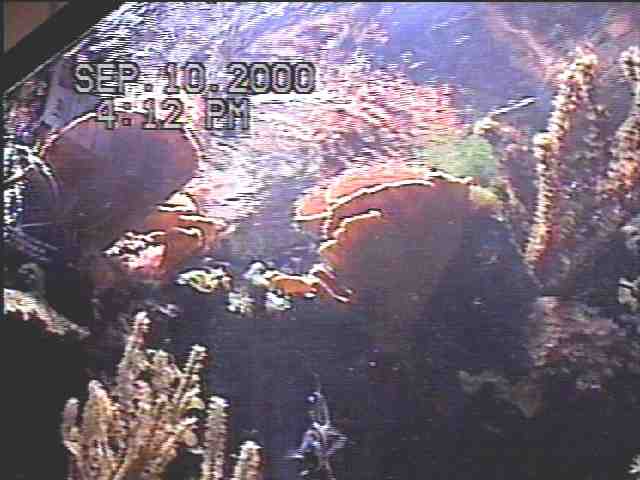
The back left corner of the aquarium.
|
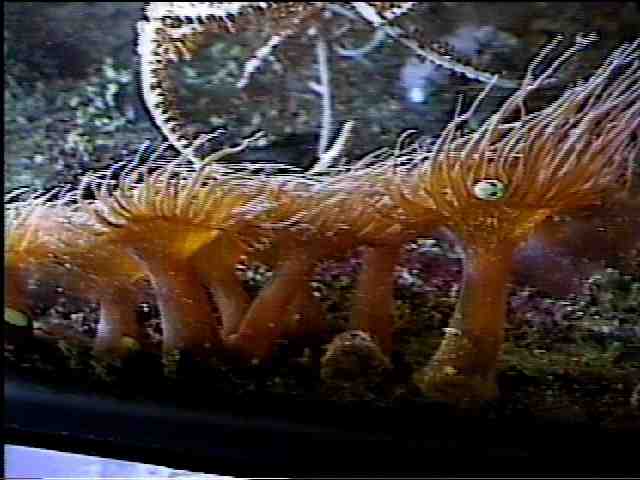
Aiptasia anemones. Easy to keep and multiply quickly, but not desirable, and hard to kill. They sting the corals and other inhabitants. Peppermint shrimp and copper banded butterfly
fish will eat them.
|
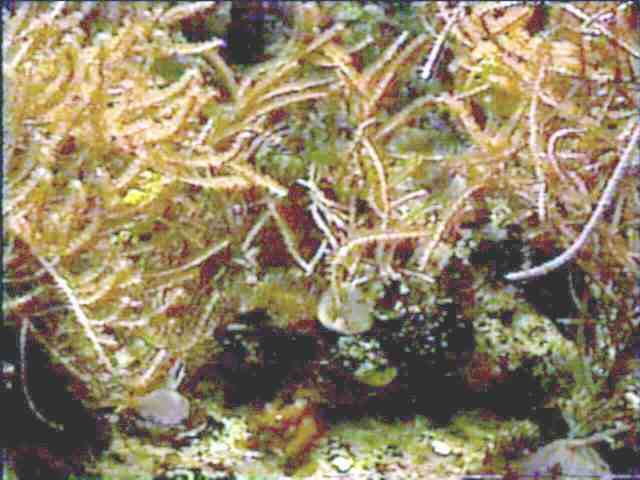
The propitiation of gorgonias was such that I was running out of room for them.
|
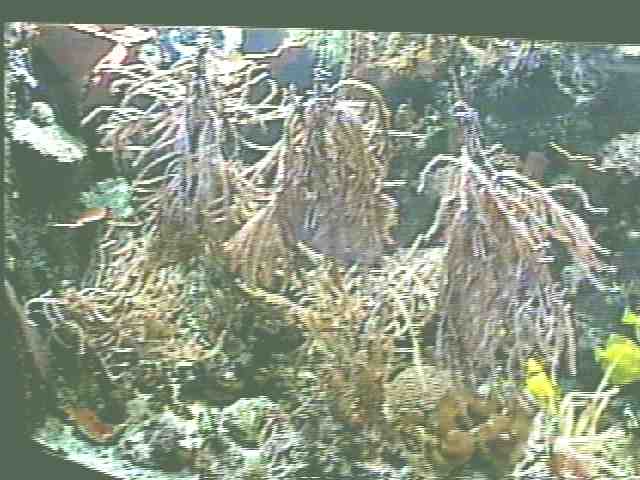
I ended up resorting to hanging a number of large frags of gorgonias by fishing line upside down right in front of the front glass.
|
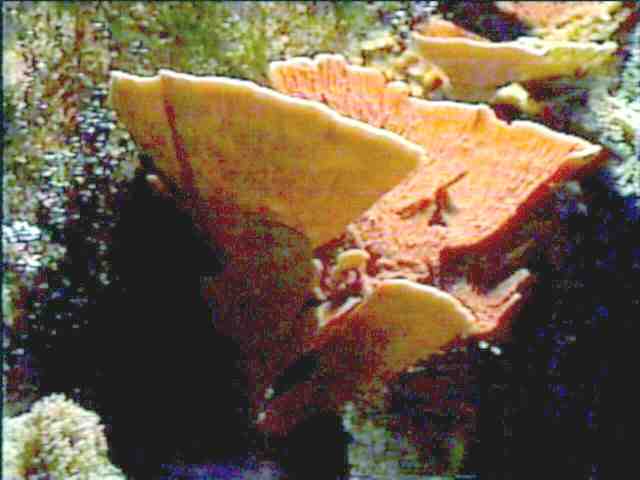
Montipora lettuce corals; very fast growing, and very fragile.
|
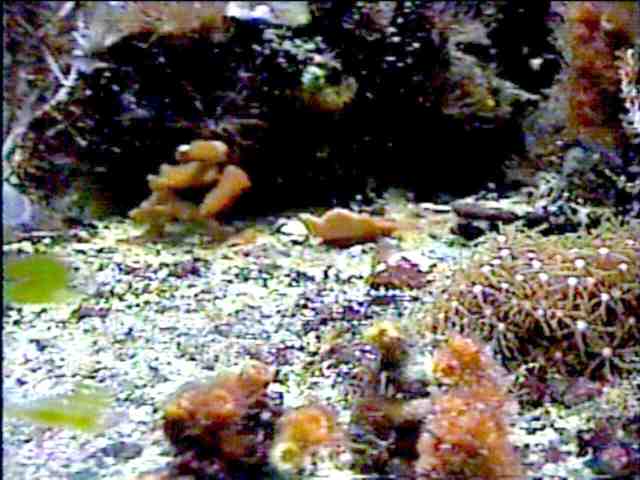
In this picture, I had removed all the sand off the bottom of the tank, leaving the natural looking cement bottom bare which grew coraline algae on it. The advantage of this was
that small coral frags never got burried by the sand.
|

The fan was plugged into a thermostat to keep the aquarium cool. The lighting was two 400 watt metal halide bulbs giving a total of 800 watts of light over the 120 gallon tank.
The fan did a great job of keeping the aquarium cool. The disadvantage of the fan was the salt spray that it put into the air. So it works as a poor man's chiller, but a chiller
is better because it does not contribute to salt in the air. The plumbing you see is 2 inch plumbing that pumps water up higher than the aquarium, down to a Y fitting, and down
into the bottom of the aquarium to shoot up inside the aquarium from the bottom. The Y fitting went to a 2 inch pipe down to the sump, just above the sump. The purpose of this
is so that when the power goes off, the plumbing will not drain the tank. A check valve could be used instead but a check valve is guaranteed to fail.
|
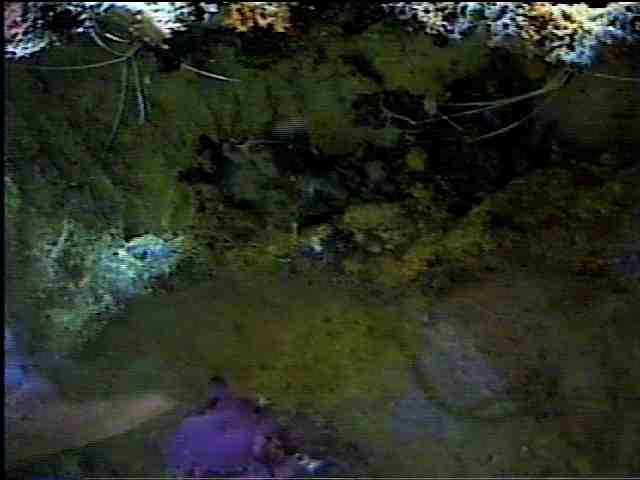
Underneath the overflow. Notice the two skunk cleaner shrimp hanging upside down.
|
|